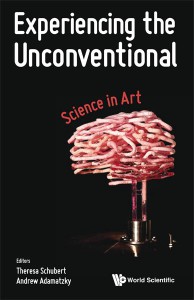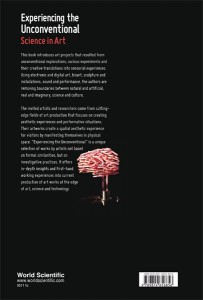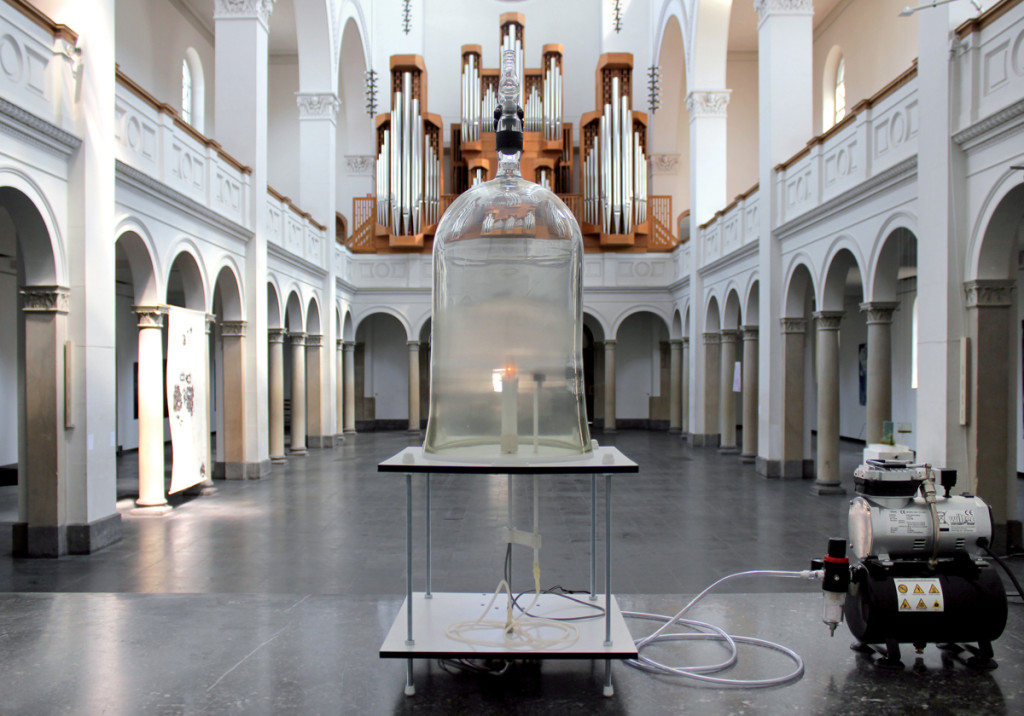Werkleitz video documentation & interview
Posted: March 13th, 2017 | Author: admin | Filed under: TLN-videos | No Comments »The Long Now, Verena Friedrich (DE ) from werkleitz on Vimeo.
THE LONG NOW video documentation
Posted: March 13th, 2017 | Author: admin | Filed under: TLN-videos | No Comments »THE LONG NOW from Verena Friedrich on Vimeo.
Experiencing the Unconventional. Science in Art.
Posted: April 16th, 2015 | Author: admin | Filed under: Press | No Comments »Essay about VANITAS MACHINE published in “Experiencing the Unconventional. Science in Art.” by Theresa Schubert and Andrew Adamatzky.
ISBN: 978-981-4656-85-6 (hardcover, 372pp), ISBN: 978-981-4656-87-0 (ebook)
http://experiencingtheunconventional.com/
Short Description
Posted: April 16th, 2015 | Author: admin | Filed under: Short description | No Comments »“There is not a law under which any part of this universe is governed which does not come into play, and is touched upon in these phenomena. There is no better, there is no more open door by which you can enter into the study of natural philosophy than by considering the physical phenomena of a candle.” (Michael Faraday, The Chemical History of a Candle, 1860–1861)
The installation VANITAS MACHINE addresses the desire for eternal life and the potential of life-prolonging measures. Based on a candle, which – by means of technical intervention – burns down very slowly, VANITAS MACHINE creates a contemporary analogy to the endeavour of prolonging the human life span with the help of science and technology.
Being one of the classical vanitas symbols, a burning candle recalls the futility of the moment, the transience of human life and the certainty of the end of existence. But is this end really inevitable?
In the course of the last two centuries, average human life expectancy has increased significantly in industrialized countries. Moreover, in the context of scientific research the biological causes of ageing are being explored. Numerous theories of ageing have been developed implicating both physiological as well as environmental factors.
One of the first theories of ageing was the so-called “rate-of-living theory”, which claims that the life span of organisms is inversely proportional to their energy turnover and is connected to calorie intake, oxygen consumption and heart rate. The higher the metabolic rate of the organism, the shorter its life span.
In VANITAS MACHINE, a candle is placed in the centre of an experimental setup. Similar to the human breathing process, a burning candle consumes oxygen and produces carbon dioxide and water. The higher the oxygen and energy turnover, the shorter the burning time of the candle.
VANITAS MACHINE has been specifically developed to keep a candle “alive” under controlled conditions. By protecting it from environmental factors and by precisely regulating its oxygen supply the “metabolism” of the candle and thus its life span can be influenced.
Fig. 3. Water, a product of combustion, condensing on the inside of the jar. (image © Verena Friedrich).
Fig. 2. Digital precision scale displaying the remaining weight of the candle. (image © Verena Friedrich).
Fig. 5. Construction for motorized height adjustment of sensors and air outlet port. (image © Verena Friedrich).
Fig. 4. Compressor with pressure-measuring unit for supplying fresh air. (image © Verena Friedrich).
Fig. 6. VANITAS MACHINE, Installation, 2013. (image © Verena Friedrich).


